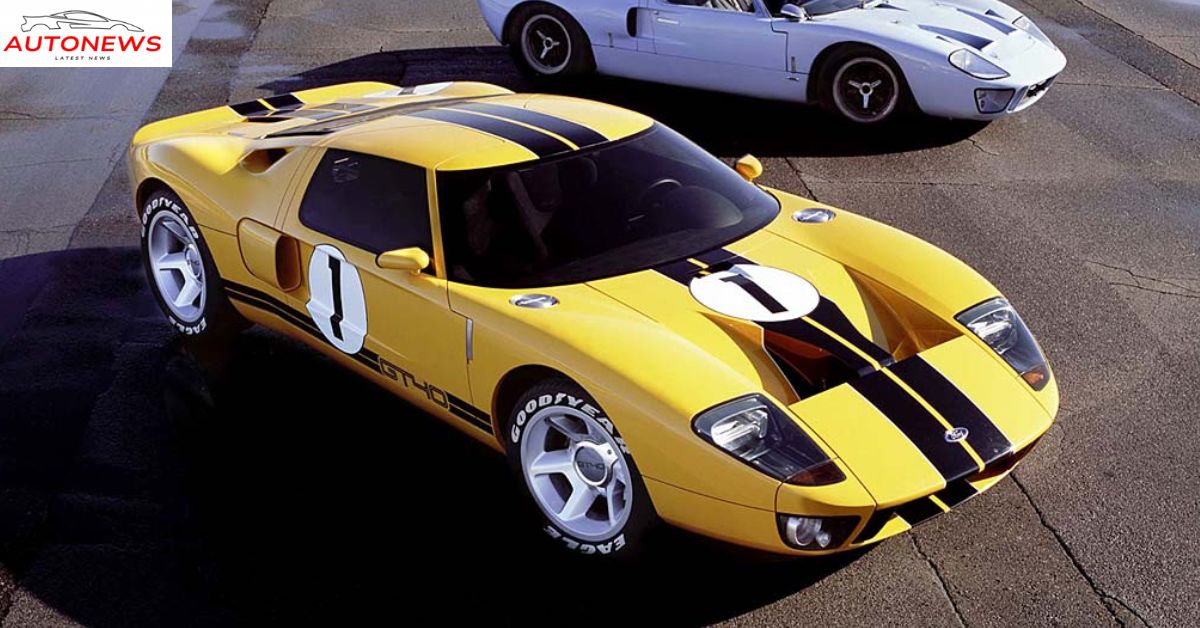When you think of American muscle and motorsport glory, one name roars louder than most — the Ford GT40. It’s more than just a car; it’s a symbol of engineering ambition, international rivalry, and a defiant declaration of speed from the American auto industry. Born in the 1960s, the GT40 wasn’t just built to win — it was built to conquer, and conquer it did, especially at one of the world’s most grueling races: the 24 Hours of Le Mans.
The Birth of a Legend
The story of the Ford GT40 begins with a grudge. In the early 1960s, Henry Ford II attempted to purchase Ferrari — a brand synonymous with racing success. Negotiations were intense, and for a brief moment, it seemed the deal would go through. But at the eleventh hour, Enzo Ferrari backed out. It was a personal and public embarrassment for Ford. What followed was one of the most aggressive and expensive revenge projects in automotive history.
Ford set out to beat Ferrari at their own game: endurance racing. Specifically, they wanted to dethrone them at Le Mans, where Ferrari had been dominating throughout the 1950s and early 1960s. The mission was clear, and the result was the GT40 — a low-slung, mid-engine race car named partly for its 40-inch height.
Designed to Dominate
To create the GT40, Ford turned to Eric Broadley of Lola Cars, a British company known for racing expertise. The early prototypes, called the GT (Grand Touring), showed promise but also had teething problems. Aerodynamic issues, mechanical failures, and handling problems plagued the early races.
But Ford didn’t give up. They poured millions into development, and soon brought in Carroll Shelby — already famous for the Shelby Cobra — to lead the project. Under Shelby’s guidance, the GT40 evolved into a racing monster. With tweaks to the chassis, aerodynamics, and engine — including the legendary 427 cubic-inch (7.0L) V8 — the GT40 became more than just competitive. It became dominant.
Le Mans Glory
The turning point came in 1966. That year, Ford returned to Le Mans with a vengeance, entering multiple GT40s. What followed is one of the most famous moments in racing history: not only did Ford win, but they swept the podium, finishing 1st, 2nd, and 3rd. Ferrari didn’t even finish.
Ford would go on to win Le Mans for four consecutive years from 1966 to 1969, solidifying the GT40’s place in motorsport history. The car became an icon — not just for its victories, but for what it represented: the idea that American engineering could take on Europe’s best and win on their turf.
Engineering Masterpiece
What made the GT40 so special? It was a perfect blend of American muscle and European finesse. The car’s body was sleek and low, designed to slice through the air at high speeds. Its V8 engine produced raw, thunderous power, capable of pushing the GT40 to speeds over 200 mph — no small feat in the 1960s.
But the GT40 wasn’t just about brute force. Its chassis and suspension were fine-tuned for endurance, allowing it to handle the corners of Le Mans with grace and precision. And crucially, it could do this hour after hour, in one of the world’s most brutal tests of mechanical durability and driver stamina.
A Legacy Reborn
The legend of the GT40 didn’t die in the ’60s. In the early 2000s, Ford revived the spirit of the GT40 with the Ford GT, a modern supercar inspired by the original design. This car celebrated the GT40’s heritage with retro styling and cutting-edge performance.
Then in 2016, on the 50th anniversary of its legendary Le Mans win, Ford did it again — returning to Le Mans with the new Ford GT and winning its class. It was a powerful tribute to the past and a reminder that the GT40’s legacy still lives on.
Final Thoughts
The Ford GT40 is more than just a racing car. It’s a story of determination, rivalry, and redemption. Born from a business deal gone wrong, it rose to become one of the most iconic and successful race cars ever built. Today, it remains a symbol of American innovation and competitive spirit.
Whether you are a motorsport enthusiast, a gearhead, or simply someone who appreciates great stories of grit and glory, the GT40 stands as a mechanical masterpiece — a legend born not just from ambition, but from the fire of a challenge.

